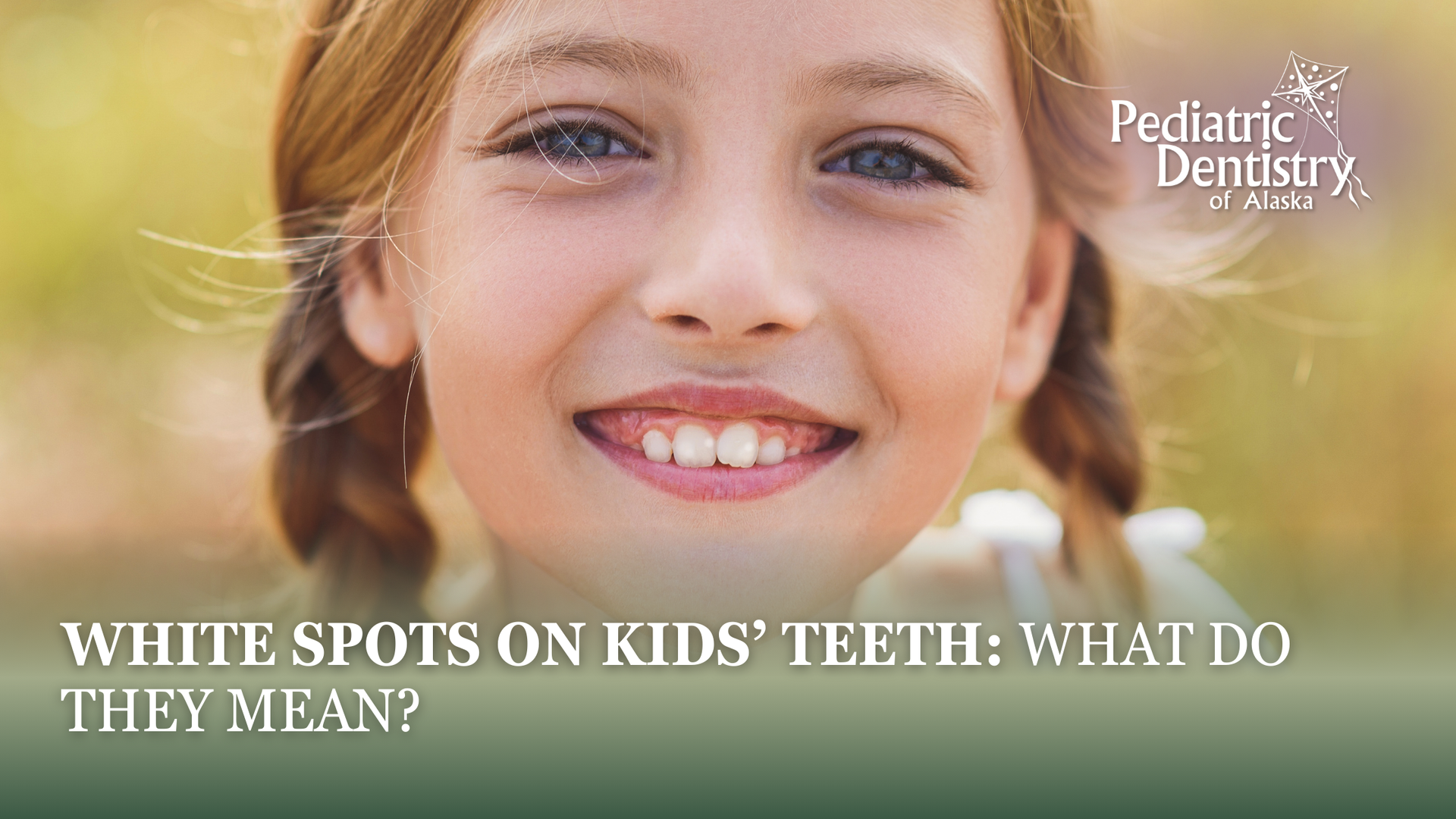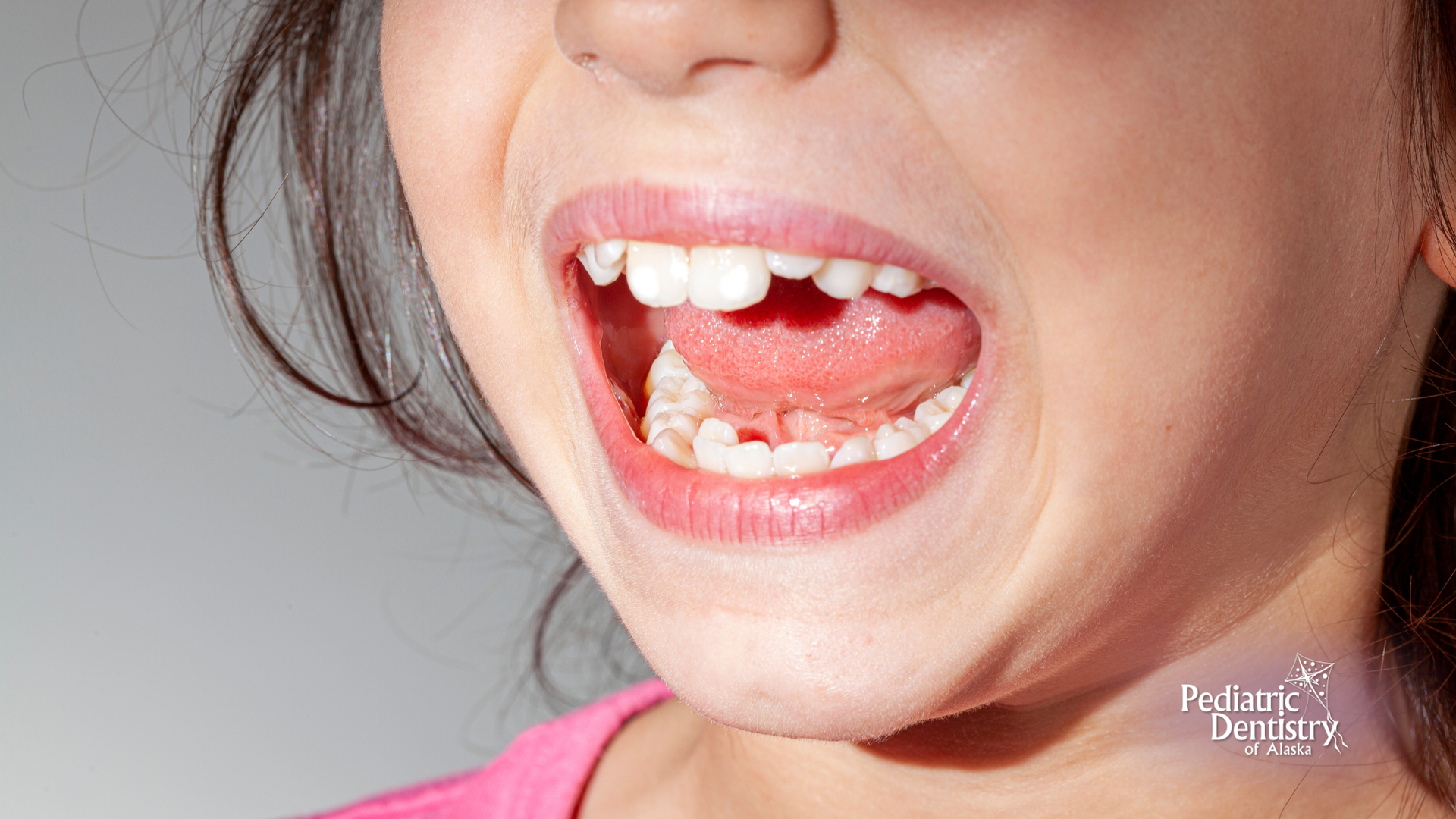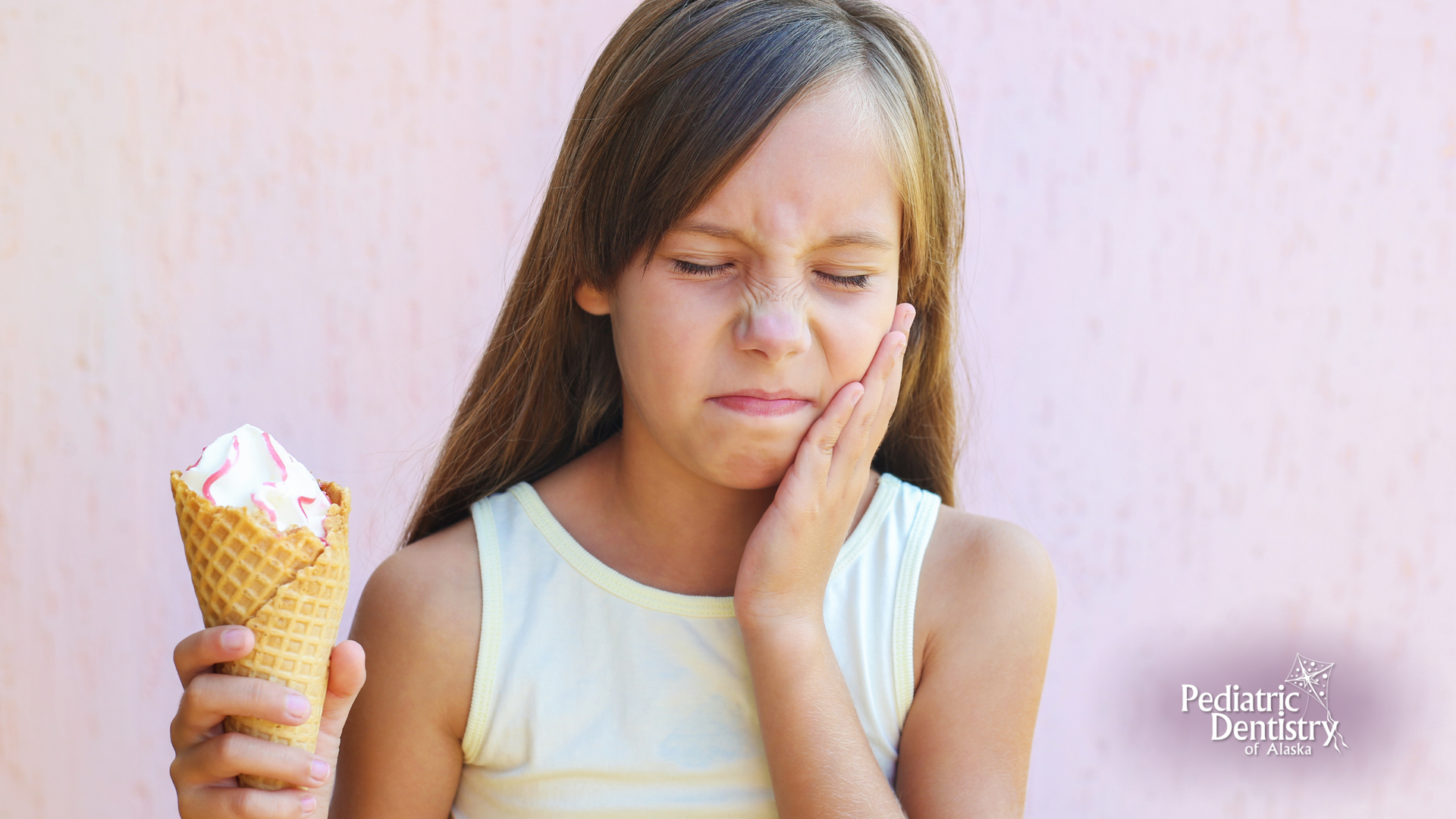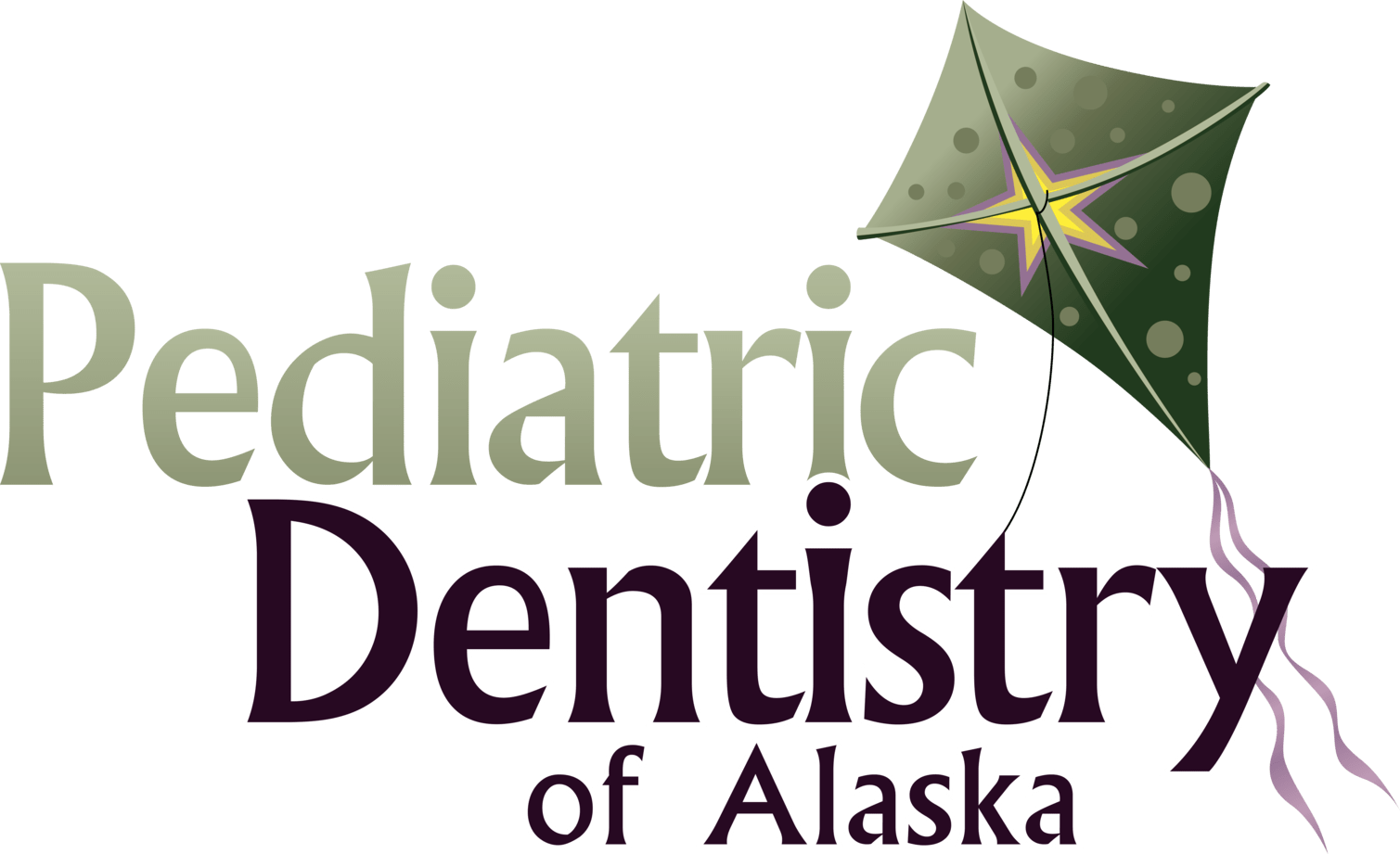White Spots on Kids’ Teeth: What Do They Mean?

Source: Dr. Marketing
White spots on your child's teeth may seem like a minor cosmetic issue, but they can often signal underlying oral health concerns. Whether due to excessive fluoride, early signs of decay, or nutritional deficiencies, these spots should not be overlooked. Identifying their cause and understanding how to address them is key to preserving your child's healthy, confident smile.
At Pediatric Dentistry of Alaska, we provide exceptional pediatric dental care. Our approach combines professional expertise with compassionate support, helping parents and children navigate oral health challenges like white spots on teeth. Let us explore what white spots mean, how to prevent them, and why early dental intervention is crucial.
What Are White Spots on Teeth?

White spots, medically known as hypocalcification, are chalky white patches on the enamel. These spots can vary in size and are often more porous than the surrounding healthy enamel, making teeth more susceptible to decay. While white spots may not always indicate serious problems, they are an important signal to assess and address your child's oral health.
Why Do They Matter?
White spots can affect not only the aesthetics of a child's smile but also their self-confidence. Moreover, these spots often indicate that the enamel is weakened, which could lead to cavities and other dental complications if not treated promptly.
Common Causes of White Spots on Kids' Teeth

Understanding what causes white spots is the first step toward effective prevention and treatment:
Dental Fluorosis: When Too Much of a Good Thing Becomes Harmful
While fluoride is crucial for preventing cavities, overexposure during the development of permanent teeth can lead to dental fluorosis. This condition is most common in children under eight who swallow toothpaste or consume too much fluoridated water. Fluorosis typically presents as white, opaque spots on the tooth surface.
Enamel Hypoplasia: When Enamel Development is Disrupted
Enamel hypoplasia is a developmental condition where the enamel does not form correctly, often due to illness, malnutrition, or trauma during early childhood. The affected teeth have a weaker enamel layer, increasing the risk of cavities and sensitivity.
Early Signs of Tooth Decay: When White Signals Mean Trouble
White spots can also indicate the early stages of tooth decay. These spots often develop when plaque builds up, leading to enamel demineralization. When caught early, this type of decay can often be reversed, but if ignored, it may progress into cavities requiring more intensive treatment.
Poor Oral Hygiene: When Plaque Takes Over
Insufficient brushing and flossing can lead to plaque accumulation. Plaque's acidic environment erodes the enamel, resulting in white spots. Children with braces are particularly at risk since brackets can trap food particles and make cleaning difficult.
Nutritional Deficiencies: When Diet Affects Dental Health
A lack of essential nutrients, such as calcium and vitamin D, can affect enamel strength and lead to white spots. Providing a balanced diet that supports dental health is critical for growing children.
How White Spots Can Affect Your Child's Oral Health

While white spots may initially seem harmless, their impact on your child's oral health and self-esteem can be significant:
- Increased Cavity Risk: Weakened enamel is more prone to decay, potentially leading to cavities.
- Tooth Sensitivity: Enamel erosion can make teeth more sensitive to temperature changes and certain foods.
- Aesthetic Concerns: Prominent white spots, particularly on front teeth, can affect your child's confidence and willingness to smile.
At Pediatric Dentistry of Alaska we focus on early detection and treatment of white spots to prevent these issues from escalating. Regular checkups allow us to monitor your child's dental health and intervene early when necessary.
How to Prevent White Spots on Children’s Teeth

Prevention is a team effort between parents, children, and dental professionals. Here is how to minimize the risk of white spots on your child's teeth:
Maintain Consistent Oral Hygiene
Encourage your child to brush twice daily with fluoride toothpaste, floss regularly, and rinse with an antibacterial mouthwash. Supervise younger children to ensure they do not swallow toothpaste, which can lead to fluorosis.
Balance Fluoride Intake
Use a pea-sized amount of toothpaste for young children and monitor fluoride consumption from all sources, including drinking water. If your water supply is highly fluoridated, talk to Pediatric Dentistry of Alaska about whether fluoride supplements are necessary.
Promote a Nutrient-Rich Diet
Incorporate foods rich in calcium and vitamin D to strengthen enamel. Avoid sugary and acidic foods that contribute to enamel erosion and the formation of white spots.
Regular Dental Visits
Routine dental checkups at Pediatric Dentistry of Alaska are essential for early detection of white spots and personalized preventive care. During these visits, we can provide professional cleanings, fluoride treatments, and dental sealants to protect your child's teeth.
Address Oral Habits Early
Habits like thumb-sucking or prolonged bottle use can affect enamel development and lead to white spots. Our team provides guidance on managing these habits to support your child's oral health.
How Pediatric Dentistry of Alaska Supports Your Child’s Oral Health

We understand that white spots on your child's teeth can be concerning. Not all white spots require treatment, but it is important to consult us if:
- The spots appear suddenly or spread quickly.
- Your child experiences discomfort or sensitivity.
- You notice additional signs of decay, such as brown or yellow spots.
- You are uncertain about the cause or how to manage the spots.
Our approach combines gentle, personalized care with advanced treatments to address these issues effectively. We start with a thorough examination to determine the underlying cause of white spots, whether it is early signs of decay, enamel hypoplasia, or fluorosis. Depending on the findings, we offer targeted treatments such as remineralization therapies, professional cleanings, or minimally invasive cosmetic solutions to restore your child's smile.
Beyond treatment, our team is dedicated to education—providing practical advice on maintaining strong enamel, making tooth-friendly dietary choices, and promoting effective oral hygiene habits at home. Our welcoming environment ensures that children feel safe and comfortable, encouraging positive dental experiences that last a lifetime.
If you have concerns about white spots on your child's teeth or want to ensure their oral health is on the right track, schedule a visit with Pediatric Dentistry of Alaska today. We are here to support your child’s journey to a healthy, confident smile.
A Bright Future for Your Child’s Smile

White spots on children's teeth can be an early sign of oral health issues, but with the right approach, they are manageable. Maintaining good oral hygiene, balancing fluoride intake, ensuring a nutrient-rich diet, and scheduling regular checkups at Pediatric Dentistry of Alaska, located in Wasilla and Palmer, are crucial steps in protecting your child’s smile.
Remember that a healthy mouth contributes to a happy mind. Our team is dedicated to helping your child achieve a vibrant, healthy smile through education, preventive care, and compassionate treatment. Contact us today to schedule an appointment and take proactive steps toward preserving your child’s oral health and confidence for years to come.



